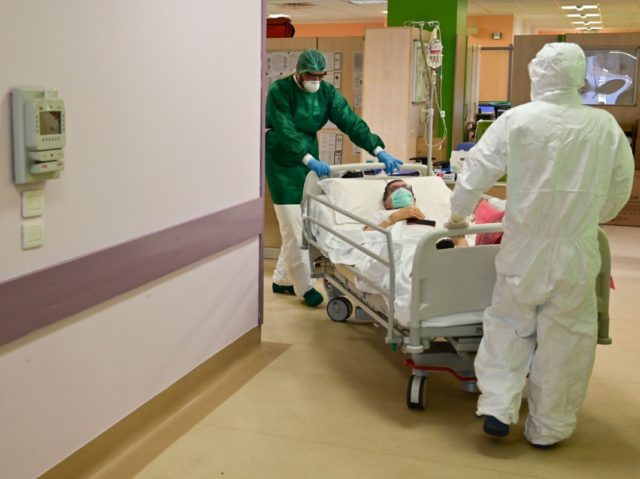In the last 24 hours, 766 people have died in Italy from the Chinese coronavirus, bringing the nation’s overall death toll to 14,681 as of Friday — an increase of 5.5 percent in one day. The percentage, however, has been on a decline for the past few days, while Italian officials say they believe that Italy has reached its “peak” as “hospitals are starting to breathe” due to less emergency room admissions.
Newly released data from Italy’s Civil Protection reveals that the country’s death toll from the virus has risen from 13,915 on Thursday to 14,681 on Friday. The total number of confirmed coronavirus cases has also risen from 115,242 to 119,827.
While an additional 766 people have died in Italy from the Wuhan coronavirus in a single day, Italian officials believe they have reached their peak a few days ago.
Meanwhile, Spain is suffering some of its worst daily death tolls yet — hovering around 1,000 deaths in 24 hours — as the nation exceeded 10,000 overall deaths on Thursday. On present trends, Spain is on course to overtake Italy as its own coronavirus crisis accelerates.
Among the deaths suffered by Italy in the last 24 hours, 351 of them were from Lombardy — the nation’s worst-infected region with the Chinese coronavirus, according to a report by La Repubblica.
The report added that there has been a slight increase in confirmed coronavirus cases in Lombardy, but it is because there has been an increase in testing.
Meanwhile, a laboratory in Iceland recently discovered through wide-scale testing for the coronavirus that roughly 50 percent of people who test positive have no symptoms, which may offer some insight into how asymptomatic people are playing a role in spreading the disease.
According to Regional Welfare Councilor, Giulio Gallera, Italian hospitals are now “starting to breathe,” as there have been fewer admissions to the emergency rooms.
Gallera added that the numbers in Lombardy are “comforting,” and that “growth has stopped, and we are in a stabilization phase that tends to decrease.”
“Among the emergency rooms, there are those who have had a very significant reduction, some mild, but it is constant,” he added. “Our hospitals are starting to breathe, and the data show that our effort is producing results.”
You can follow Alana Mastrangelo on Twitter at @ARmastrangelo, and on Instagram.

COMMENTS
Please let us know if you're having issues with commenting.